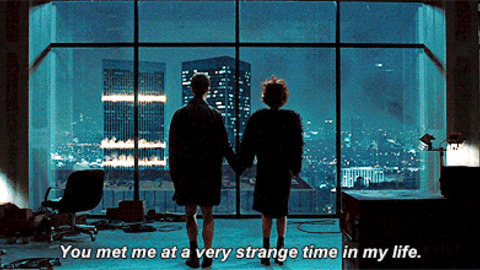Hello year 12! I am in a Year 8 awards assembly. I will be back in about half an hour.
In the meantime; please look at this link
Plan an answer to the question at the top of the post;
"Analyse the ways in which the media represent groups of people."
Your plan needs to include;
At least THREE theorists and quotes.
At least FOUR media texts from at least TWO different media. (EG; - Not all TV programmes)
Other sources and references (such as the links to the articles and videos we have mentioned)
I'll see you end of Period 1 / beginning of Period 2.
- Mr Lane
Tuesday 14 July 2015
Sunday 12 July 2015
Was 'Emo' the last true subculture?
"Through this technology we were hit with sound, style, meaning and a way of belonging by not belonging. Importantly, Myspace allowed you to sculpt your online identity. It was simple enough to teach yourself basic HTML and customise your profile. The selfie as we know it was born and so was filtering it to shit. Your name could be anything you wanted it to be - typically though you just added "Morphine", "Switchblade" or anything similarly hxc. (Try this scene name generator for inspiration). At an age when we were wrestling with ideas about self and identity, emo was there and so were millions of virtual friends doing exactly the same thing."
Read the article from i-d magazine here:
http://i-d.vice.com/en_gb/article/emo-was-the-last-true-subculture
Here's another article we discussed about whether, for modern youth, subcultures have died
Tuesday 7 July 2015
Moral Panics
"Moral panics are expressions of disapproval, condemnation, or criticism, that arise every now and then to phenomenon, which could be defined as deviant" - Stanley Cohen
Those who instigate them, or who are to have seen to have instigated them are "folk devils".
Cohen states that "The media are carriers of moral panics, which they either initiate themselves, or they carry the message of other groups. We see things about unmarried mothers, failing schools, the current crisis about children in care. These are all distinguishable moral panics, and the argument is that the reaction to deviance inflates and increases these groups"
Cohen first wrote about Moral Panics when analysing the 1960's seafront clashes between the two youth subcultures, the mods and the rockers, but arguably this is one of the ways in which the collective representation of youth has stayed consistent throughout history and the present.
Some examples of supposed moral panics from history, include hysteria over AIDS, Video Games, 'Video Nasties' Films, Heavy Metal Music, Drugs, and Dace Music.
"The moral part is the condemnation and social disapproval, and the panic is the element of hysteria and over reaction. Which subsequently can be applied to all sorts of waves of phenomenon. It is largely created by the media: no media – no moral panic."
A classic example of this would be the blame appropriated to Marilyn Manson and heavy metal music for the Columbine High School shooting of the 1990s.
What moral panics can you think of that have happened in your lifetime?
How has the media reported them?
Friday 3 July 2015
David Gauntlett on Identity (2002)
Have a look at this extract from David Gauntlett's book on Media Identity Theory. (2002, revised in 2008)
http://www.theoryhead.com/gender/extract.htm
Find some quotes to support your ideas and research about collective identity of youth
http://www.theoryhead.com/gender/extract.htm
Find some quotes to support your ideas and research about collective identity of youth
Thursday 2 July 2015
UK 'Tribes'
Channel 4 think that most of the UK youth generation (16-24) can be defined into a number of tribes (subcultures)
 |
| Image from Channel 4/Crowd DNA |
"They’re everywhere. Young Alts down one end of the high street. Skaters pulling moves in front of the town hall. Trendies ignoring everyone else as they march towards a Saturday shopping spree. This project – commissioned by Channel 4, created by Crowd DNA – takes you to the heart of young Britain.
Tribal alliances are less hard and fast than they once were. The exchange of ideas is more fluid; the social glues that unite people more varied – you might disagree on which band is best, but you could still share a loyalty for Topshop, Sony PlayStation or Channel 4. Thus, understanding the dynamics of tribal UK is essential for brands who wish to engage and, vitally, become part of the conversation."
Some of these tribes include; New Casual, Boy Racer, Hipster, Tumblr Kids, and Townies.
Have a look at their definitions and see if you agree; http://www.uktribes.com
Or take the quiz to find out what tribe they think you belong to: (requires registration to channel4.com) http://tribes.channel4.com
What do you think?
Subscribe to:
Posts (Atom)
